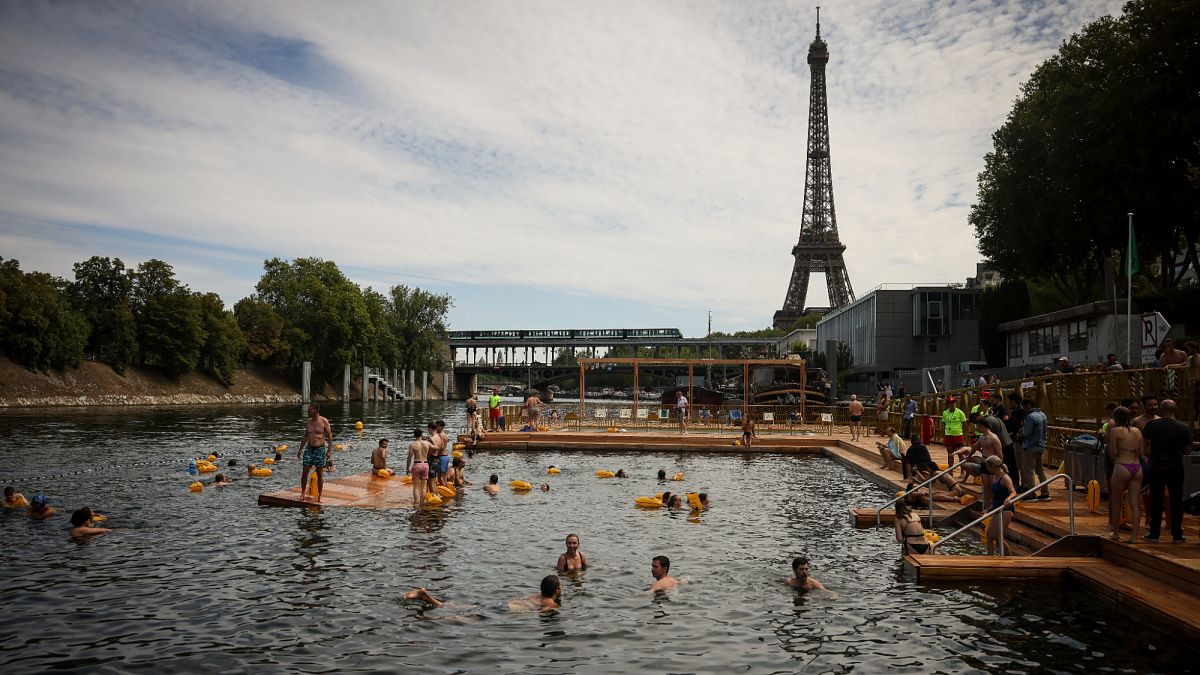

In a significant environmental and cultural milestone, Parisians recently celebrated the return of swimming to the River Seine after more than a century of absence. This joyous occasion follows an ambitious €1.4 billion cleanup project, closely tied to efforts surrounding the previous summer’s Olympic Games. With vast improvements to its water quality, the Seine now meets European standards on most days, opening up new leisure opportunities for Parisians and tourists alike and reaffirming the city’s commitment to sustainability initiatives.
The restoration of the Seine exemplifies Paris’s forward-thinking approach under the direction of Mayor Anne Hidalgo, whose tenure has been marked by a series of robust environmental projects aimed at enhancing the city’s sustainability. The transformation of the once-polluted river into a welcoming body for swimmers is a testament to the successful collaboration between city officials, environmental scientists, and construction teams striving for a greener urban future. Mayor Hidalgo, whose term is coming to an end next year, leaves behind a legacy of environmental consciousness, with the revamped Seine standing as a crowning achievement of her tenure.
Efforts to rejuvenate the Seine included the installation of advanced water filtration systems and the construction of overflow basins to handle wastewater, significantly reducing pollution levels. Multi-faceted in its approach, the cleanup project not only targeted environmental concerns but also aimed to revive the river’s historical significance as a center of public life. For many Parisians, the Seine holds cherished memories of leisurely swims and social gatherings from years gone by, making the recent reopening a poignant return to tradition.
On another note concerning European cities, parts of Prague and the surrounding countries in the Czech Republic recently experienced a major power outage, resulting in significant disruptions to the metro and tram systems. Prime Minister Petr Fiala confirmed that authorities are thoroughly investigating the cause of the outage, which remains unidentified but impacted public transportation and train services widely. The unexpected blackout highlights the importance of resilient infrastructure and preparedness in urban environments.
Efforts to maintain continuous electricity supply are critical for cities like Prague, serving millions of residents and visitors who rely on public transport for their daily commutes. The power outage underscores the intricate dynamics of modern urban management and emphasizes the necessity for cities to adopt robust strategies for energy security. While the current situation presents challenges, it also offers an opportunity for city planners and engineers to assess vulnerabilities and strengthen systems against future occurrences.
Both stories, though varied in nature, reflect significant urban developments across Europe. Whether it is the heartening renewal of Paris’s iconic Seine or the resilience testing power outage in Prague, both incidents highlight the evolving landscape of urban living in the 21st century. They serve as reminders of the ongoing endeavors to harmonize human activity with nature and technology, aiming for an urban life that is both sustainable and reliable.
As Parisians now gather on the riverbanks to swim and socialize in newly created recreational areas, and as Prague’s residents await the resolution of their public transport challenges, these cities continue to demonstrate the power of community action and innovative governance. In different ways, they each contribute to the collective vision of vibrant, adaptable, and forward-looking urban environments.
Source: {link}
